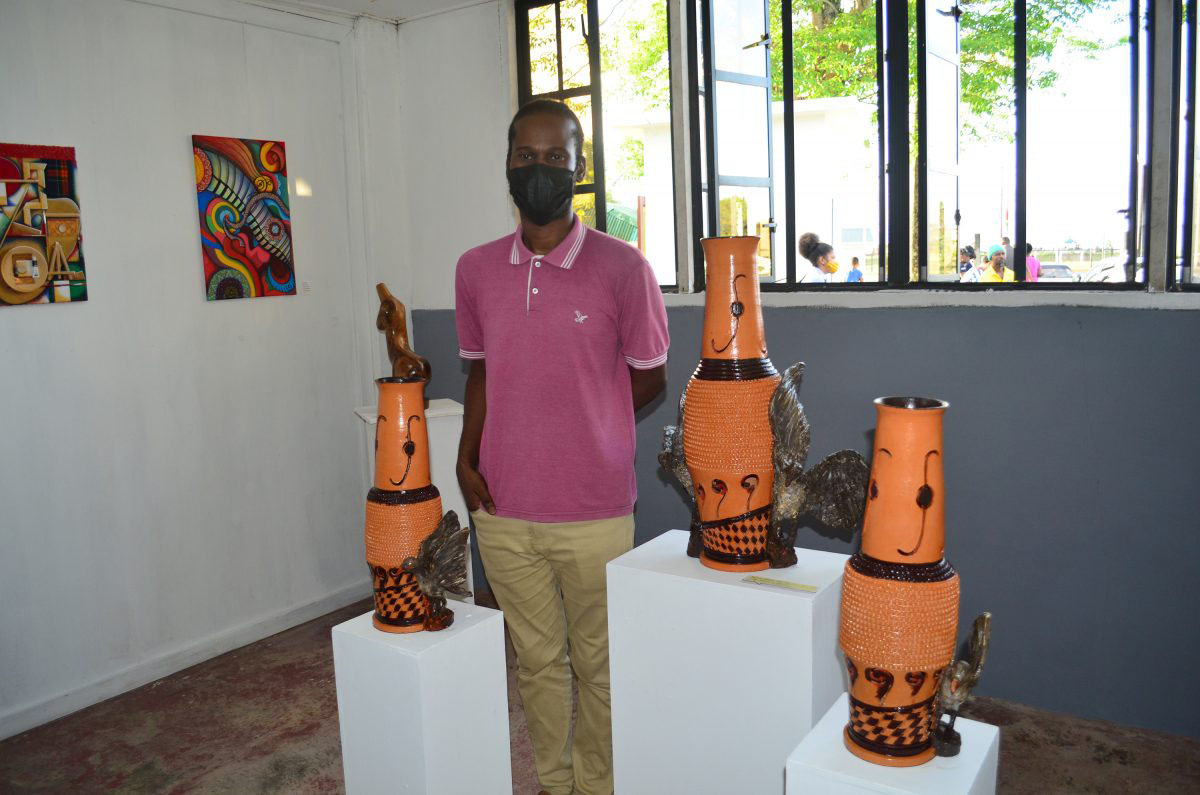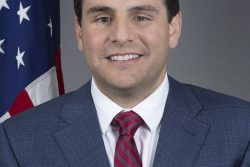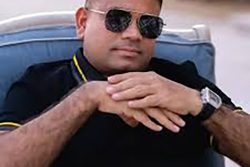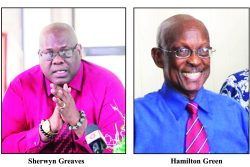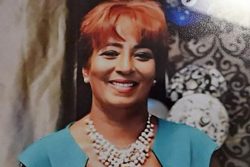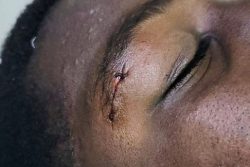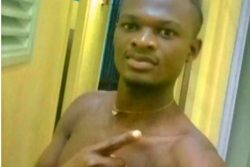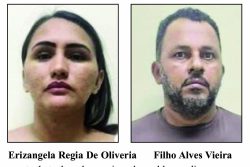[Today we are privileged to reprint another priceless archival treasure from the past. It is a tribute to Guyana’s “Greatest Artist” E. R. Burrowes written by “Oleo” in 1966. Like the other pieces from old chronicles that we recently featured it takes us back to a front row seat to the state of Guyanese Art more than five decades ago. Quite specifically, it paints a portrait of Burrowes, legendary founder and master of the Working People’s Art Class that nurtured so many of Guyana’s greatest artists, and the man after whom the national institution the E R Burrowes School of Art was named. “Our Greatest Artist” by Oleo was first published in the “Chronicle Christmas Annual” 1966 edited by Charles J. Chichester, published in Georgetown, Guyana in December, 1966 and sold for 75 cents.
We are grateful for the opportunity to access this from the collection of George N. Cave, formerly a linguist at the University of Guyana, which he also served as Registrar. Mr Cave was honoured last week at the Conference of the Society for Caribbean Linguistics and the Society for Pidgin Languages hosted by the University. He was presented with an award for his services to Caribbean Linguistics during a special session of the conference at Turkeyen.]
A TRIBUTE
BY OLEO
Edward Rupert Burrowes passed on from the scene while I am away, on vacation and study of originals in the art galleries and museums of the United States of America.
Tears welled in my eyes as I read a friend’s message to me of his passing. I mention my business of studying original paintings because it is in this context that I came to know Edward Burrowes.
He was one of my teachers and one of the significant ones. In fact, he had been the teacher of practically every one of the significant artists of the present and previous generations.
He was certainly not Guyana’s finest painter, but undoubtedly, one of its greatest artists. All things together, in the areas of art and education, Edward Burrowes will later be remembered as another of Guyana’s truly great sons.
What a pity that in recent times he withdrew from active participation in the art movement because some silly “nationalist” was making a point that Burrowes was a Barbadian and not a Guyanese. And after all these years !
Burrowes had always stressed the fact that he was born in Barbados, but none, as far as I know, could be more a son of Guyana. He came to these shores as a young boy and struggled as a young man to become an artist. His foster mother would dispose of the strange media and mixtures he called paint. Unable to afford water colours and oils, Burrowes used the juices of flowers and leaves, the colour from papers, cheap dyes.
Before he had matured as a craftsman, he had marshalled other aspirants around his thought and humble home. Apart from his determination to become a painter, he possessed the ability to establish social contact. Burrowes thus moved at the level that he thought would be most beneficial for the young movement. Governors, bishops, and the talented wives of top civil servants from overseas were brought into the mainstream of things. They taught what skills they knew and helped him found the art movement and form the first clubs and groups – the B. G, Arts and Crafts Society, the Ruskin Art Group.
No Guyanese in those days ever made it as an artist alone, so Burrowes tailored, taught school English and History, sang baritone (“Chu Chin Chow” at the Metro) and practiced journalism for the New Daily Chronicle and the Daily Argosy.
Those were a few of the qualities that distinguished him as a scholar and a citizen. We came to look to him as more than an artist. He was to us youngsters a mentor and a leading light.
He determined much of our reading (made me read Huxley, Priestley and the contemporary giants). His lectures to young artists involved not only the History of Art and its appreciation, but also spread to the Scriptures, Great Letters, History and Politics.
His programmes gave to Guyana a generation of promising young artists whose education is thus broad-based and many-faceted – young men of wide interests and viewpoint. Burrowes, it has been, whose proletarian art programme, by way of the Working People’s Art Class, has given our country, citizens aware of the arts. It is for us to make cultural capital of his investment.
His schools programme for teachers removed Art from the fringe of the curriculum to a position where it could become a vehicle of education. He was not concerned mainly with discovering artists, but with building a gallery of appreciation among ordinary people, particularly youngsters, and in the course of his efforts he discovered Denis Williams, Aubrey Williams, Donald Locke, Stanley Greaves, Michael Leila, Patrick Barrington – served as a catalyst otherwise for Emerson Samuels, Cyril Kanhai, Claude Hoyte, Reginald Phang.
Most of these young men have become greater painters and artists than their master, Burrowes, but his social programme will be difficult to eclipse. It is a fact that his teaching drew more upon his energy and his potential than his increasing technical mastery, yet he produced some of the significant paintings of his times. He was, perhaps, our finest landscapist. He alone has captured the tonal grandeur of our tropical foliage and the rugged contour of our alluvial coast. As a small boy I would go rambling and sketching day long with him along the coast and up the river banks. Many times we had just a couple of pennies, but we fed on the discoveries we would make – colourful creeks, thatched roofs, along wandering backdams, waving rice fields, cathedrals of trees and workers at their tasks.
His local colour depicted the sturdy, buxom country types – rice workers, sugar cane cutters, fowl vendors, shrimpers and fishermen. His colour was always deeply orchestrated. In recent times his rugged treatment and naïve concept earned him the commentary of “primitive”. He never approved of it, for he thought of himself as a sophisticate, which in spirit and in substance, he was; but all will remember him for his robustness, although a relatively slight man physically.
His vocabulary was that of a lively artist – vibrant, flashy, picturesque, declamatory.
He could whisper affections to little boys and girls and his pets, but would bawl out a lazy, shiftless and unthinking student.
Queens College students and members of his art groups and teacher college classes knew the disciplines he exacted. His energy was indefatiguable, his imagination limitless, his drive and initiative inextinguishable. One wondered why he went on and on. In later days he moved on to sculpture and worked against material odds. His statue of Critchlow found no favour with the ordinary man but no one has yet said anything of the circumstances in which it was wrought – the dilapidated shed behind Transport and Harbours – or the demands it made on a man wracked by illness and daunted somewhat by frustrations removed from his aesthetic objectives.
Yet his greatest works were produced in such moods and in the dilapidation of poor housing with makeshift studios.
He painted pot-boilers for the tourist trade and middle class homes to keep things going, but the economic odds were always against him. His spirit remained indomitable to the end. Royal honours were mere motivators to greater heights. Burrowes rose above the aggressions of the youngsters he had educated and the machinations of rivals not equal to his mental stature.
Guyana has lost a great son – one who contributed immeasurably to the social and cultural welfare and development of our people.
